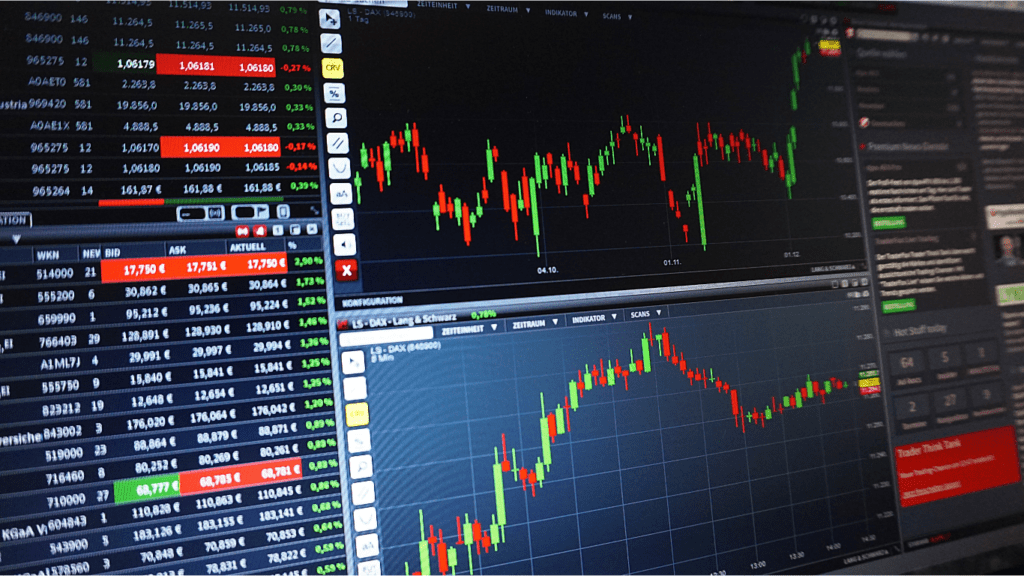Understanding NFTs
NFTs, or Non-Fungible Tokens, are unique digital assets verified using blockchain technology. Unlike cryptocurrencies such as Bitcoin or Ethereum, NFTs are indivisible and unique, making each token distinct and irreplaceable.
Characteristics of NFTs
NFTs exhibit specific attributes that distinguish them from other digital assets:
- Uniqueness: Each NFT has a unique identifier distinguishing it from any other token. For example, digital art pieces authenticated via NFTs include metadata confirming their originality and provenance.
- Indivisibility: NFTs can’t be split into smaller units; they exist as whole items. For instance, unlike Bitcoin, where fractions can be traded, an NFT must be bought or sold in its entirety.
- Ownership: NFTs verify ownership of digital assets, recorded on the blockchain. A buyer purchasing an NFT for a virtual concert ticket has proof of ownership and authenticity tied to their specific token.
- Transferability: NFTs can be transferred or sold on various marketplaces. Platforms like OpenSea and Rarible facilitate these trades, offering a space for collectors to buy, sell, and exchange items.
How NFTs Work
NFTs operate on blockchain networks, primarily Ethereum. They use smart contracts incorporating unique metadata and attributes to define the NFT. When I mint an NFT, I create a new token on the blockchain, embedding details like ownership, transaction history, and any additional metadata.
Use Cases of NFTs
NFTs have revolutionized various industries by providing proof of authenticity and ownership:
- Digital Art: Artists mint digital artworks as NFTs to maintain royalty rights. For instance, Beeple’s “Everydays: The First 5000 Days” sold for $69 million.
- Music: Musicians release tracks or albums as NFTs, ensuring control over distribution and royalties. Kings of Leon offered their album as an NFT, providing fans with exclusive content.
- Gaming: In-game assets, such as virtual lands or skins, are sold as NFTs, allowing players to own, trade, and monetize their digital items. Axie Infinity’s in-game assets have seen significant market activity.
- Virtual Real Estate: Platforms like Decentraland and Cryptovoxels enable users to buy, sell, and develop virtual land parcels as NFTs, creating new revenue streams and investment opportunities.
Benefits of NFTs
NFTs bring several advantages to both creators and collectors:
- Authenticity: Ensured through blockchain, preventing counterfeits.
- Royalties: Automated through smart contracts, ensuring creators receive payments.
- Market Reach: Access to global digital markets broadens the audience and potential buyers.
By understanding these facets, it’s clear that NFTs aren’t just a trend but are reshaping digital ownership and commerce.
What Makes NFT Collectibles Unique?
NFT collectibles possess distinct characteristics that set them apart from traditional digital assets. Here’s what makes these items unique:
Digital Ownership
NFTs revolutionize the concept of digital ownership. Unlike traditional digital files, NFTs come with verifiable ownership through the blockchain. When I own an NFT, the blockchain records it, ensuring authenticity and provenance.
This verifiable ledger confirms that I am the sole owner, even if copies of the digital file exist. In cases of ownership disputes, blockchain serves as an immutable record, providing clarity.
Scarcity and Value
Scarcity boosts the value of NFT collectibles. Most NFTs are minted in limited quantities, creating exclusivity. When I buy an NFT, I can check its rarity using metadata stored in the token. Limited numbers make certain collectibles more desirable, increasing their market value.
For example, the popular CryptoPunks series has a fixed supply of 10,000 unique characters, driving high demand among collectors. The combination of scarcity and verifiable ownership enhances the overall value proposition of NFTs.
These elements combine to create a compelling case for NFTs as a transformative force in the world of digital assets.
Popular NFT Collectibles
Popular NFT collectibles are revolutionizing various sectors by introducing verifiable digital ownership. Below are some of the key areas impacted by NFTs.
Art and Music
Digital art has gained prominence through NFTs. Notable artists, like Beeple, have sold digital artworks for millions. Music artists, such as Grimes, are also creating exclusive tracks as NFTs. These NFTs ensure authenticity, allowing creators to monetize their work directly and retain royalties for secondary sales.
Virtual Real Estate
Virtual real estate has emerged as a significant segment in the NFT market. Platforms like Decentraland and Cryptovoxels offer parcels of virtual land as NFTs. Owners can develop these lands, create virtual businesses, or sell them at higher values. This sector provides new revenue streams and investment opportunities in a digital context.
Gaming Items
Gaming has embraced NFTs for in-game assets. Players can buy, sell, and trade items like skins and weapons as NFTs. Games like Axie Infinity and CryptoKitties pioneered this trend, where players can own and monetize their digital assets. This model enhances the gaming experience and fosters a robust virtual economy.
Platforms for Trading NFTs

Platforms for trading NFTs are pivotal for the digital collectibles market. They provide the necessary infrastructure for buying, selling, and managing digital assets.
OpenSea
OpenSea, established in 2017, serves as the largest NFT marketplace. It supports various digital assets, including art, music, and virtual real estate. The platform allows users to create, buy, and sell NFTs with ease. OpenSea offers one of the most user-friendly interfaces, making it accessible even for newcomers. It supports a wide range of wallets, enabling seamless transactions.
Rarible
Rarible operates as a community-driven NFT marketplace. Launched in 2020, Rarible places emphasis on decentralization. It allows users to create, buy, and sell digital collectibles while rewarding active participants with its native token, RARI. The platform integrates a governance model where token holders can vote on key platform decisions, adding a layer of user involvement.
Foundation
Foundation targets creators who want to tokenize their work. Debuting in early 2020, the platform focuses on high-quality art and exclusive content. Foundation invites artists to join via an application process, ensuring a curated experience. The platform has garnered attention for hosting high-profile NFT auctions and supporting diverse digital art forms.
Each of these platforms offers unique features catering to various needs, whether for beginners, community-driven participants, or high-end creators.
The Financial Impact of NFT Collectibles
NFT collectibles have redefined digital ownership, driving significant financial shifts in various markets.
Market Trends
NFT sales surged in 2021, reaching $25 billion, according to DappRadar. The market witnessed substantial growth in digital art, gaming assets, and virtual real estate. Platforms like OpenSea and Rarible recorded unprecedented transaction volumes, establishing themselves as industry leaders.
Celebrities and artists embraced NFTs, creating unique, high-value items that attracted mainstream attention. Despite market volatility, interest in NFT collectibles remains strong, with demand for exclusive and rare digital assets driving high prices.
Investment Potential
Investors are drawn to NFTs for their potential high returns and portfolio diversification. Unique digital items often appreciate in value, especially limited editions and those linked to prominent figures.
Early adopters saw significant gains, such as the first tweet NFT sold for $2.9 million. However, NFT investments come with risks, including market speculation and liquidity challenges. Careful consideration and thorough research are essential when investing in NFT collectibles.
Potential Risks and Challenges
Despite the booming popularity of NFTs, several risks and challenges persist for collectors and investors.
Market Volatility
NFT market volatility poses a significant risk. Prices of NFT assets fluctuate widely, often driven by trends rather than intrinsic value. For example, celebrity endorsements can surge prices rapidly, only to plummet when interest wanes. Market sentiment shifts swiftly, affecting liquidity and asset valuation unpredictably.
Legal and Ethical Concerns
Legal and ethical concerns also challenge the NFT space. Ownership rights and intellectual property laws are unclear, creating potential disputes over asset possession. Copyright issues arise frequently, with instances of unauthorized use of digital content in NFTs.
Ethical considerations include environmental impact, since blockchain transactions consume vast energy. Fraud and scams are prevalent too, with fake marketplaces deceiving buyers and sellers alike.



 Founder & CEO
Daniel Anderson is the visionary founder and CEO of the website, leading the charge in revolutionizing the crypto space. With a deep understanding of blockchain technology and years of experience in the industry, Daniel has established himself as a key figure in the cryptocurrency world. His passion for decentralization and financial innovation drives the platform’s mission to deliver cutting-edge insights and resources for crypto enthusiasts, traders, and investors. Under his leadership, the website has grown into a trusted hub for the latest trends, news, and developments in the digital asset space.
Founder & CEO
Daniel Anderson is the visionary founder and CEO of the website, leading the charge in revolutionizing the crypto space. With a deep understanding of blockchain technology and years of experience in the industry, Daniel has established himself as a key figure in the cryptocurrency world. His passion for decentralization and financial innovation drives the platform’s mission to deliver cutting-edge insights and resources for crypto enthusiasts, traders, and investors. Under his leadership, the website has grown into a trusted hub for the latest trends, news, and developments in the digital asset space.
